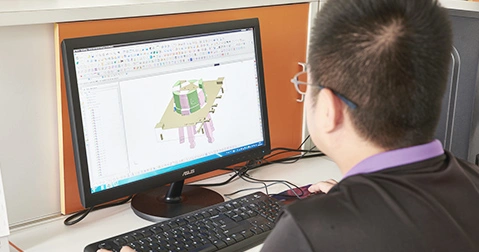Whether CNC machine services, 3D printing, or Injection molding, manufacturing products for medical application and surgical uses require certain guidelines and high-quality levels. Due to the delicacy of medical equipment, the need for precision, cleanliness, and ergonomics cannot be overstated. Here are six simple design considerations for medical device manufacturing
1. Consider cleanliness
Medical devices, as a matter of must, have to meet and comply with certain quality standards. These ISO and FDA standards regulate what may or may not be approved in medical equipment.
When designing your parts for medical manufacturing, ensure that unless necessary, aesthetic features that can trap fluids, acids, reagents, viral and bacterial bodies are not present.
Support features like ribs, gussets, and radiused-corners can be hard to access, while surface textures that are porous and ununiform may also trap dirt. Generally speaking, your part surface should have a uniform texture, no pores, and very few tight corners.
2. Ergonomics matter
When designing your part, a firm understanding of the equipment functionality will help you achieve perfection. Design your pieces to fit the size, hold, and application of the equipment and the end-users. Medical devices and equipment must be easy to hold, grip, and remove. Using the right geometry will improve your design and user acceptance score. With the right surface finish, you can still beautify your part and enhance its functionality.
3. Use tight tolerances
Medical devices are usually high-precision equipment with critical tolerances. This is because of the need for high accuracy in their end-applications. However, tight tolerances can also mitigate the risk of contamination and ensure that your part remains easy to clean and prevent unnecessary gaps. Depending on the manufacturing solution used, requesting tighter tolerances may come at a higher price, but it will enhance your product’s functionality and precision.
4. Build a simple, foolproof design
Away from operation rooms, ER, and hospital applications, many medical space devices are made for direct patient uses at home or offices. When designing your part, consider the gap in medical expertise that patients may have, and make your parts simple and easy to use.
To aid use by patients and non-professionals, simplify the design to work as intended, decongest the buttons, use large labels, and use color to denote or code each part of the device. Essentially, keep the design so simple that anyone without a manual can operate it at the first attempt.
5. Choose the right materials.
Material selection is another crucial part of medical device design. When selecting the material for developing your design, consider the ease of cleaning the material, corrosion-resistance, the kind of finish achievable, heat resistance, and UV-sterilization possibility.
Ideal materials for medical manufacturing must also be easy to see in low-light, without sharp contrasts or reflections that will strain or stretch the user’s sight when operating or diagnosing. Lastly, consider the biocompatibility and safety of the material when employed in its application environment.
6. Get creative with colors.
Colors are often used to beautify and enhance product appearance and acceptance. For medical manufacturing, colors can be used to convey information and fulfill more than cosmetic requirements.
When designing your part, consider using color code on buttons and components to differentiate levels of performance, danger, safety, or priority. Different colors or varying hues and intensities can help convey functionality and purposes. Colors can also alter mood, energize, or attract attention as required.
Depending on who the end-users are, vibrant colors like yellow can be great for kid devices, while blue colors can be used for adult equipment that treats sleeping problems. Colors like green can be associated with natural healing, while different shades of white are generally used in medical equipment for cleanliness sake.
FirstPart Medical, Dental and Swiss Manufacturing in China
FirstPart is one of China’s leading manufacturing hub for Additive, CNC and Conventional manufacturing techniques. We boast of excellent in-house capacity, labor force and logistics while delivering exceptional value for money.
Our array of services include CNC machining, CNC turning, CNC milling, 3D printing, Rapid Tooling, Die casting, Rapid prototyping, Plastic Injection Molding, Urethane Casting, Aluminium Extrusion, Post-machining/Finishing services and much more.
As we understand the global challenges that is faced by new businesses in these times of the Coronavirus, we offer product tooling, mass production, bridge tooling and low-volume prototyping/manufacturing with very flexible minimum order quantities (1 to 100,000) for the medical and dental industry.
We are particularly able to ensure the production of high-precision, tight-tolerance stainless steel, titanium, aluminium parts that can be machined with CNC milling centers to swiss standards and industrial compliance.
Our services are online, scalable and innovative, with a team of engineers and design experts available to support you through your entire product development cycle.









